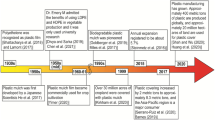Abstract
The effect of earthworm coprolites on the water retention curves in soils of different geneses and textures was investigated by the method of equilibrium centrifuging. Coprolites sampled in the field were compared with the surrounding soil. The effect of earthworms on a soddy-podzolic light loamy soil (from Moscow oblast) was comprehensively analyzed in the course of a special model experiment in a laboratory. This experiment was necessary because it was difficult to separate the coprolites from the soil, in which additional coprolites could appear under natural conditions. In all the variants of the experiment, the differences between the water retention curves of the coprolites and the surrounding soil (or control substrates unaffected by earthworms) were statistically significant. The development of coprolites favored a considerable increase (up to 20 wt.% and more) of the soil water retention capacity upon equivalent water potentials within the range from 0 to −1000 kPa. In most cases, the soil water retention capacity increased within the entire range of the soil moisture contents. This could be explained by the fact that strongly swelling hygroscopic plant remains (detritus) were included into the coprolites and by the formation of a specific highly porous aggregate structure.
Similar content being viewed by others
References
A. F. Vadyunina and Z. A. Korchagina, Methods for Studying the Physical Properties of Soils (Agropromizdat, Moscow, 1986) [in Russian].
N. A. Zvonkova and A. V. Tiunov, “Some Properties of Soils Adjacent to Tracks of Earthworms Lumbrisus terrestris L,” Vstn. Mosk. Univ., Ser. 17: Pochvoved., No. 3, 35–38 (1997).
A. V. Smagin, N. B. Sadovnikova, T. V. Nazarova, et al., “The Effect of Organic Matter on the Water Retention Capacity of Soils,” Prochvovedenie, No. 3, 1–10 (2004) [Eur. Soil Sci. 37 (3), 267–275 (2004)].
A. V. Smagin, A. S. Manucharov, N. B. Sadovnikova, et al., “The Effect of Exchangeable Cations on the Thermodynamic State of Water in Clay Minerals,” Pochvovedenie, No. 5, 551–555 (2004) [Eur. Soil Sci. 37 (5), 473–478 (2004)].
A. V. Smagin, Gas Phase of Soils (Mosk. Gos. Univ., Moscow, 2005) [in Russian].
A. V. Smagin and N. B. Sadovnikova, “The Determination of the Primary Hydrophysical Function of Soil by the Centrifuge Method,” Pochvovedenie, No. 11, 1362–1370 (1998) [Eur. Soil Sci. 31 (11), 1237–1244 (1998)].
A. V. Smagin, “Theory and Methods of Evaluating the Physical Status of Soils,” Pochvovedenie, No. 3, 328–341 (2003) [Eur. Soil Sci. 36 (3), 301–312 (2003)].
A. V. Smagin, N. B. Sadovnikova, D. D. Khaidapova, and E. M. Shevchenko, Ecological Assessment of the Biophysical Status of Soils (Mosk. Gos. Univ., Moscow, 1999) [in Russian].
K. E. Lee, Earthworms: Their Ecology and Relationships with Land Use (Academic, Sidney, 1985).
J. N. Parle, “A Microbial Study of Earthworms Casts,” J. Gen. Microbiol. 31, 13–22 (1963).
Author information
Authors and Affiliations
Additional information
Original Russian Text © A.V. Smagin, A.V. Prusak, 2008, published in Pochvovedenie, 2008, No. 6, pp. 704–709.
Rights and permissions
About this article
Cite this article
Smagin, A.V., Prusak, A.V. The effect of earthworm coprolites on the soil water retention curve. Eurasian Soil Sc. 41, 618–622 (2008). https://doi.org/10.1134/S1064229308060069
Received:
Published:
Issue Date:
DOI: https://doi.org/10.1134/S1064229308060069




